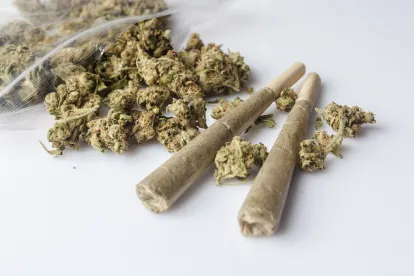The U.S. Department of Justice’s Drug Enforcement Administration published its 2019 National Drug Threat Assessment on January 30, 2020. The DEA’s annual report is a comprehensive strategic assessment of the threat posed to the United States by domestic and international drug trafficking and the abuse of drugs. It compiles data from many sources, including drug seizures, laboratory analyses, information on the involvement of organized criminal groups, and survey data provided to DEA by state and local law enforcement agencies across the country.
Highlights of the DEA’s report include the following:
-
Marijuana remains the most commonly used illicit drug in the United States. Most states that have legalized marijuana have placed no limits on the Tetrahydrocannabinol (THC) potency of marijuana or its associated concentrate products. (THC is the psychoactive component of marijuana). Consequently, THC potency continues to increase, as does demand. Mexico remains the most significant foreign source for marijuana available in the U.S., but domestic marijuana production and availability continues to rise. Black market marijuana production by criminal trafficking organizations continues to increase, predominantly in states that have legalized marijuana. The popularity of marijuana use, the demand for increasingly potent marijuana and marijuana products, the potential for substantial profit, and the perception of little risk entice diverse traffickers and criminal organizations to cultivate and distribute illegal marijuana throughout the U.S.
-
Drug poisoning deaths are the leading cause of injury death in the U.S. In 2017, drug poisoning deaths reached their highest recorded level (information for 2018 and 2019 was not available) and, every year since 2011, have outnumbered deaths by firearms, motor vehicle crashes, suicide and homicide.
-
Fentanyl and other highly potent synthetic opioids – primarily from China and Mexico – continue to be the most lethal category of illicit substances misused in the U.S. Fentanyl continues to be sold as counterfeit prescription pills as traffickers are increasingly selling fentanyl to users both alone and as an adulterant, leading to rising fentanyl-related deaths.
-
Heroin-related overdose deaths remain at high levels in the U.S., due to continued use and availability. Heroin-only overdose deaths declined in 2017, while heroin-fentanyl overdose deaths continued to climb.
-
Controlled Prescription Drugs are still responsible for most drug overdose deaths and are the second most commonly abused substances in the U.S.
-
Methamphetamine remains widely available, with traffickers attempting to create new customers by expanding into new, non-traditional methamphetamine markets such as the Northeast, or other bases with new product forms.
-
Cocaine is a resurgent threat in the U.S. and cocaine-involved overdose deaths continue to climb, primarily due to the continued spread of fentanyl into the cocaine supply.




 />i
/>i

